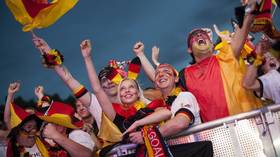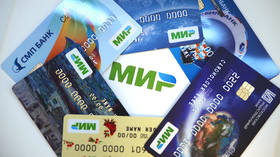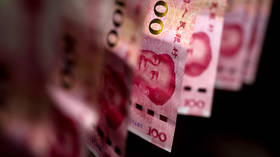“Today’s decision means that the court has rejected Gazprom’s claim, and the decision of the arbitration cannot be canceled. Apart from that, the court has not detected any procedural violations,” said the ruling. It has noted that the decision cannot be appealed.
The existing agreement for Russian gas transit through Ukraine to Europe expires next year, but the talks have stalled. Last week, Gazprom offered to extend the existing agreement or sign a new deal for one year, taking into consideration the forecast for the European Union’s gas demand.
Also on rt.com Russia offers Ukraine deal to extend gas transit contract for 1 year
Naftogaz wants the Russian company to pay the money awarded by the arbitration before any deal is reached.
Following the Swedish court decision, Kremlin spokesman Dmitry Peskov said on Wednesday that “Naftogaz should formalize a new structure and conduct all necessary procedures after the unbundling, and it is also necessary to allocate necessary volumes.”
“All this takes time, and there is still time, but it is running out,” Peskov specified, noting that while work was underway, it was not possible to reveal any details of negotiations.
Also on rt.com Russia boosts gas supplies to Europe while transit deal with Ukraine in limbo
Gazprom and Naftogaz have been litigating over gas supplies and transit contracts with the Arbitration Institute of the Stockholm Chamber of Commerce since 2014.
Gazprom is demanding more than $37 billion from the Ukrainian company for reducing gas transit under the take-or-pay clause for 2012-2016, payment for gas supplied in May-June 2014 and other gas debts.
Naftogaz pushed for a retroactive change in the price of gas, the reimbursement of overpayments and the repeal of a ban on reselling Russian gas.
The court eventually satisfied some of the Ukrainian company’s demands, in particular by setting a minimum amount of gas that Naftogaz must buy from Gazprom annually (from 2018) at a volume that was 10 times lower than in the original contract. At the same time, it also obliged Gazprom to pay for the transit of the Russian gas through the Ukrainian territory between 2009 and 2017 even though the gas was not, in fact, transited over that period.
The court justified its decision by referring to a difficult economic situation in Ukraine.
The Head of Gazprom, Alexei Miller, then called the court’s decision “asymmetric” and “very politically motivated.”
On Monday, Russian President Vladimir Putin and Ukrainian President Volodymyr Zelensky discussed by telephone the upcoming trilateral gas talks between Ukraine, Russia and the European Union.
For more stories on economy finance visit RT’s business section
Article source: https://www.rt.com/business/474472-gazprom-naftogaz-sweden-court/?utm_source=rss&utm_medium=rss&utm_campaign=RSS


